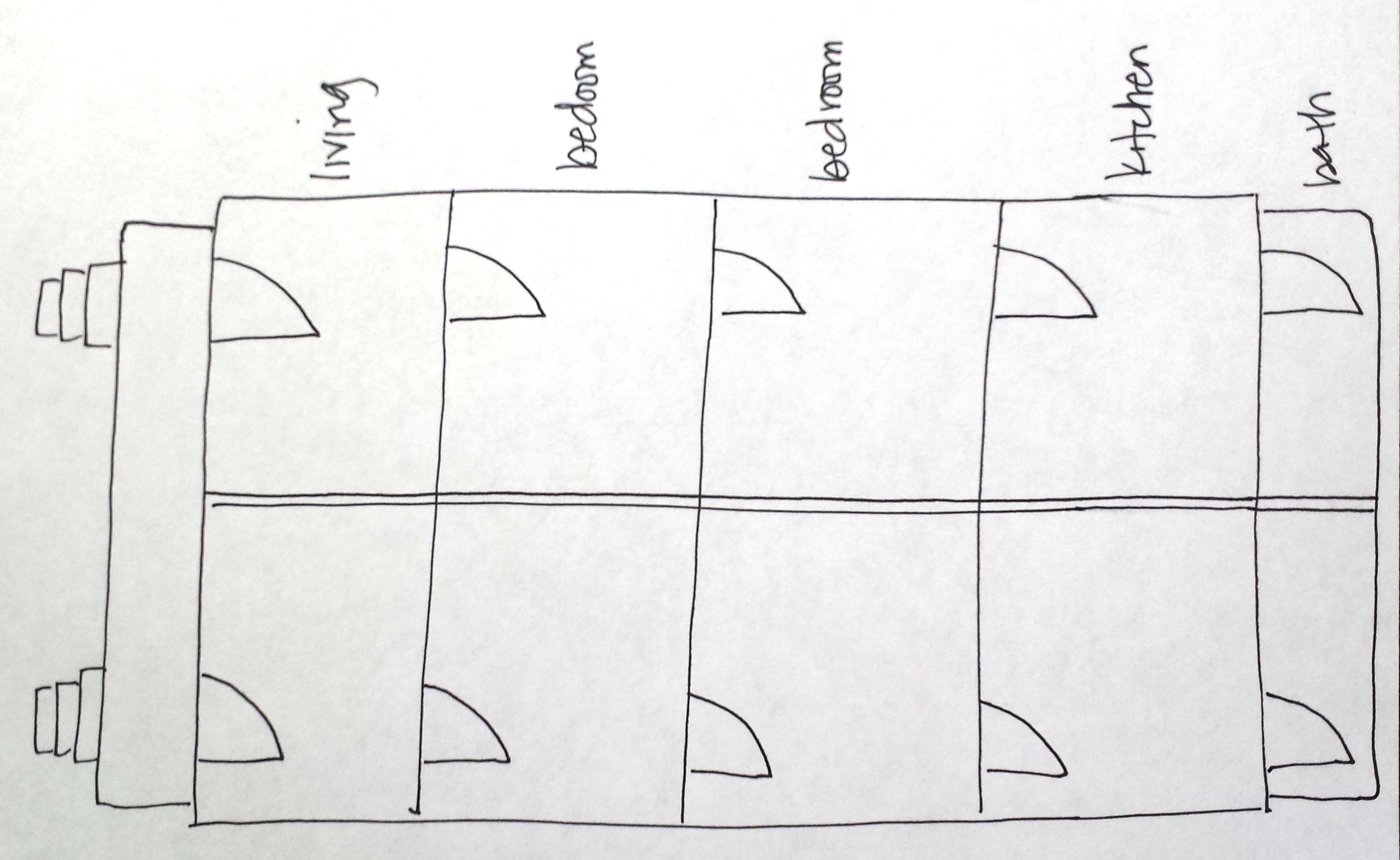 The dining rooms are coming. It’s how I know my neighborhood is becoming aspirationally middle class.
The dining rooms are coming. It’s how I know my neighborhood is becoming aspirationally middle class.
My neighborhood is filled with “shotgun” houses. Probably from West Africa, they are designed for a hot, humid climate. The homes consist of several rooms in a row. There are no hallways (and no privacy). High ceilings collect the heat and the doorways are placed in a row to encourage a breeze to blow all the way through.
Around here, more often than not, they have been built as duplexes: two long skinny houses that share a middle wall. The kitchen is usually in the back leading to an addition that houses a small bathroom. Here’s my sketch:
As the neighborhood has been gentrifying, flippers have set their sights on these double shotguns. Instead of simply refurbishing them, though, they’ve been merging them. Duplexes are becoming larger single family homes with hallways (which substantially changes the dynamic among its residents) and makes space for dining rooms. Check out the new dining room on this flip (yikes):
At NPR, Mackensie Griffin offered a quick history of dining rooms, arguing that they were unusual in the US before the late 1700s. Families didn’t generally have enough room to set one aside strictly for dining. “Rooms and tables had multiple uses,” Griffin wrote, “and families would eat in shifts, if necessary.”
Thomas Jefferson would be one of the first Americans to have a dining room table. Monticello was built in 1772, dining room included. Wealthy families followed suit and eventually the trend trickled down to the middle classes. Correspondingly, the idea that the whole family should eat dinner together became a middle class value, a hallmark of good parenting, and one that was structurally — that is, architecturally — elusive to the poor and working class.
The shotgun house we find throughout the South is an example of just how elusive. Built before closets, all the rooms in a traditional shotgun are technically multi-purpose: they can be used as living rooms, bedrooms, offices, dining rooms, storage, or whatever. In practice, though, medium to large and sometimes extended families live in these homes. Many residents would be lucky to have a dedicated living room; a dining room would be a luxury indeed.
But they’re coming anyway. The rejection of the traditional floor plan in these remodels — for being too small, insufficiently private, and un-dining-roomed — hints at a turn toward a richer sort of resident, one that demands a lifestyle modeled by Jefferson and made sacred by the American middle class.
Cross-posted at Inequality by (Interior) Design.
Lisa Wade, PhD is an Associate Professor at Tulane University. She is the author of American Hookup, a book about college sexual culture; a textbook about gender; and a forthcoming introductory text: Terrible Magnificent Sociology. You can follow her on Twitter and Instagram.






 To make a long, well-put, and worth-reading argument short: eviction isn’t rare as many policymakers and sociologists might assume; it is actually a horrifyingly common phenomenon. Urban sociologists have missed the magnitude of the eviction phenomenon because they have traditionally used neighborhoods as the unit of analysis, studying issues such as segregation and gentrification. Because eviction is rarely studied, we don’t have good data on eviction. Establishing a dataset of eviction is not a simple data collecting task, given that there are many forms of informal eviction. The consequences of eviction are devastating and have a profound, negative, and life-long impact on subsequent trajectories: worse housing, more eviction, and homelessness, all disproportionately affecting women of color with children (“a female equivalent of mass incarceration,” Desmond argued at a
To make a long, well-put, and worth-reading argument short: eviction isn’t rare as many policymakers and sociologists might assume; it is actually a horrifyingly common phenomenon. Urban sociologists have missed the magnitude of the eviction phenomenon because they have traditionally used neighborhoods as the unit of analysis, studying issues such as segregation and gentrification. Because eviction is rarely studied, we don’t have good data on eviction. Establishing a dataset of eviction is not a simple data collecting task, given that there are many forms of informal eviction. The consequences of eviction are devastating and have a profound, negative, and life-long impact on subsequent trajectories: worse housing, more eviction, and homelessness, all disproportionately affecting women of color with children (“a female equivalent of mass incarceration,” Desmond argued at a 